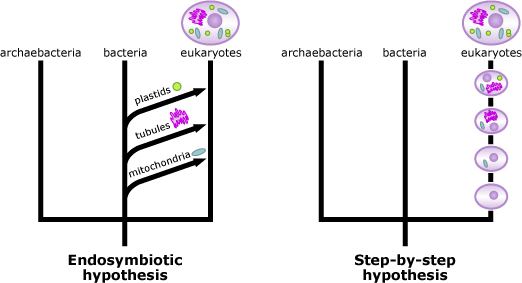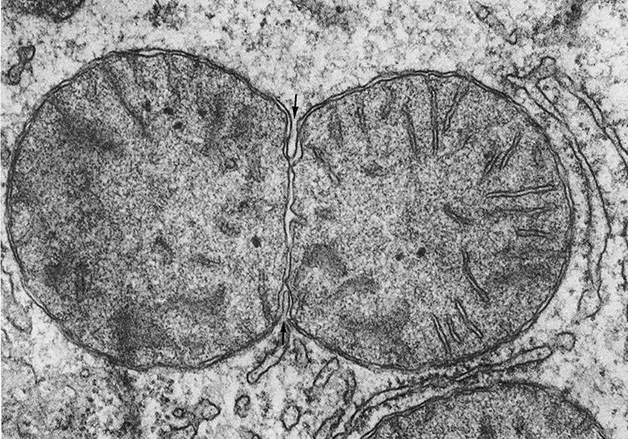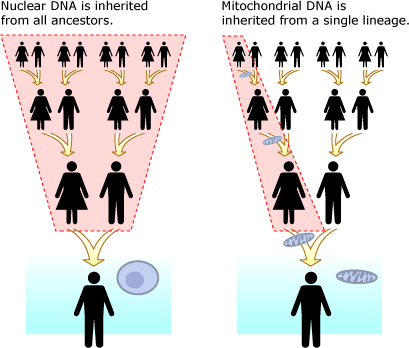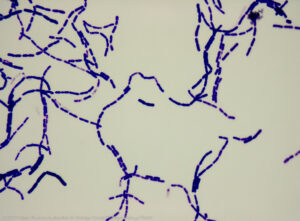At the time Margulis proposed her new version of the endosymbiotic hypothesis, the dominant view in the scientific community was that mitochondria and similar structures had evolved in a step-by-step manner from other parts of the cell. So how did Margulis make a case for her idea? All scientific arguments work in the same way. You imagine what you would expect or predict to observe in a particular situation if the hypothesis were true, and then you see if that expectation (or prediction) matches reality. If it does — and if no other hypothesis generates the same expectation — the idea is supported; if not, it is contradicted. Most scientific hypotheses and theories generate many different expectations, all concerning different lines of evidence that might or might not support the idea.

Let’s see what unique expectations the endosymbiotic hypothesis generated that the step-by-step hypothesis did not. Though Margulis’ hypothesis dealt with mitochondria, tubular structures, and plastids (e.g., the chloroplast), we’ll start by focusing on just the mitochondria.
If mitochondria evolved from an independent bacterium engulfed by another, then we’d expect that:
- Mitochondria reproduce themselves and are passed down from parent to offspring
Free-living bacteria reproduce themselves; they are not built by another organism. So if mitochondria are really the descendents of free-living bacteria, we’d expect them to reproduce themselves and be passed to an individual’s descendents — not be constructed anew from other parts of the host cell with each new generation. Margulis herself had seen the way that mitochondria made more of themselves by dividing in half. And other scientists had published observations of these new mitochondria being divided between daughter cells when the host cell split. There was no doubt that mitochondria fulfilled the first expectation. So far, so good!
A mitochondrion in a cell from the liver of a rat prepares to divide. Photo credits: Daniel Friend. - Mitochondria have their own genetic material
All organisms have genetic material, so if mitochondria had once lived on their own as bacteria, they should have their own DNA. Just as Margulis had gone looking for DNA in Euglena chloroplasts, other scientists had been looking for DNA in mitochondria — and had found it! Mitochondria met Margulis’ second expectation. - Mitochondrial DNA codes for its own traits
If mitochondrial DNA is really the DNA of what was once a distinct bacterium, we’d expect it to code for specific traits that the original bacterium had (e.g., using oxygen to break down food) — traits that the DNA in the nucleus doesn’t code for. But how can you tell if a trait comes from DNA in mitochondria or DNA in the nucleus? Margulis came up with two tests:Test #1: The easiest method would be to remove the mitochondria, then check and see if the trait (e.g., production of a certain protein for breaking down food) still exists in the cell. Unfortunately, most cells die when their mitochondria are removed, and that makes it tough to say whether any traits are missing or not! For mitochondria at least, this test was inconclusive.Test #2: The second test relied on the way traits are inherited. Mendel was able to predict what traits offspring would have because, in most cases, offspring get half their genetic material from Mom and half from Dad. But it turns out that in many multicellular organisms, mitochondria get passed down from just one parent — usually from the mother. This is because mitochondria are generally inherited just from the egg, not from the sperm. That means that if specific traits (e.g., using oxygen to break down food) are carried by the mitochondrial DNA (and not by the nuclear DNA), those traits should have unusual maternal patterns of inheritance. Other scientists had already discovered such traits! Kearns-Sayre syndrome was investigated long after Margulis proposed her hypothesis, but it provides a good example of this sort of trait. Kearns-Sayre syndrome is a rare, human genetic disorder caused by a decreased ability of cells to get energy out of food. When scientists studied the inheritance pattern of this disease, they found that it was only passed down from the mother — just as we’d expect if the gene that causes this disorder was located on mitochondrial DNA. Evidence gathered later also supported the idea that the gene for the syndrome was on mitochondrial DNA. Margulis knew that such maternally inherited traits did exist. Furthermore, these are traits that seem related to the mitochondrion’s job in the cell. This was strong evidence supporting the idea that some traits are only encoded in mitochondrial DNA. Mitochondria passed this test too!

Unlike nuclear DNA (left), mitochondrial DNA is only inherited from the maternal lineage (right) — a quirk which allowed Margulis to determine whether mitochondrial DNA encoded unique traits. - Mitochondria have bacterial relatives; mitochondria are more closely related to free-living bacteria than they are to the cell they reside in
If mitochondria evolved from free-living bacteria, mitochondria should have long-lost bacterial cousins. But how could scientists figure out who those cousins might be? Complex traits, like a long DNA sequence, a complicated organ, or an intricate biochemical process are often good indicators of evolutionary relationships. If two organisms have the same complex trait, it’s much more likely that they inherited it from the same ancestor than that the same complex trait just happened to evolve twice in two separate lineages.Margulis didn’t have to look very hard to find a whole group of bacteria that fit the bill. The aerobic bacteria shared an essential complex trait with mitochondria — the ability to use oxygen to break down food molecules. Mitochondria and these free-living bacteria even use the same biochemical steps in the process! Aerobic bacteria were a perfect candidate for mitochondria’s bacterial cousins.

- Learn more about the logic of testing scientific ideas.
- Learn more about testing hypotheses regarding past events in Predicting the past.
- Learn more about multiple lines of evidence in Arguments with legs to stand on.
